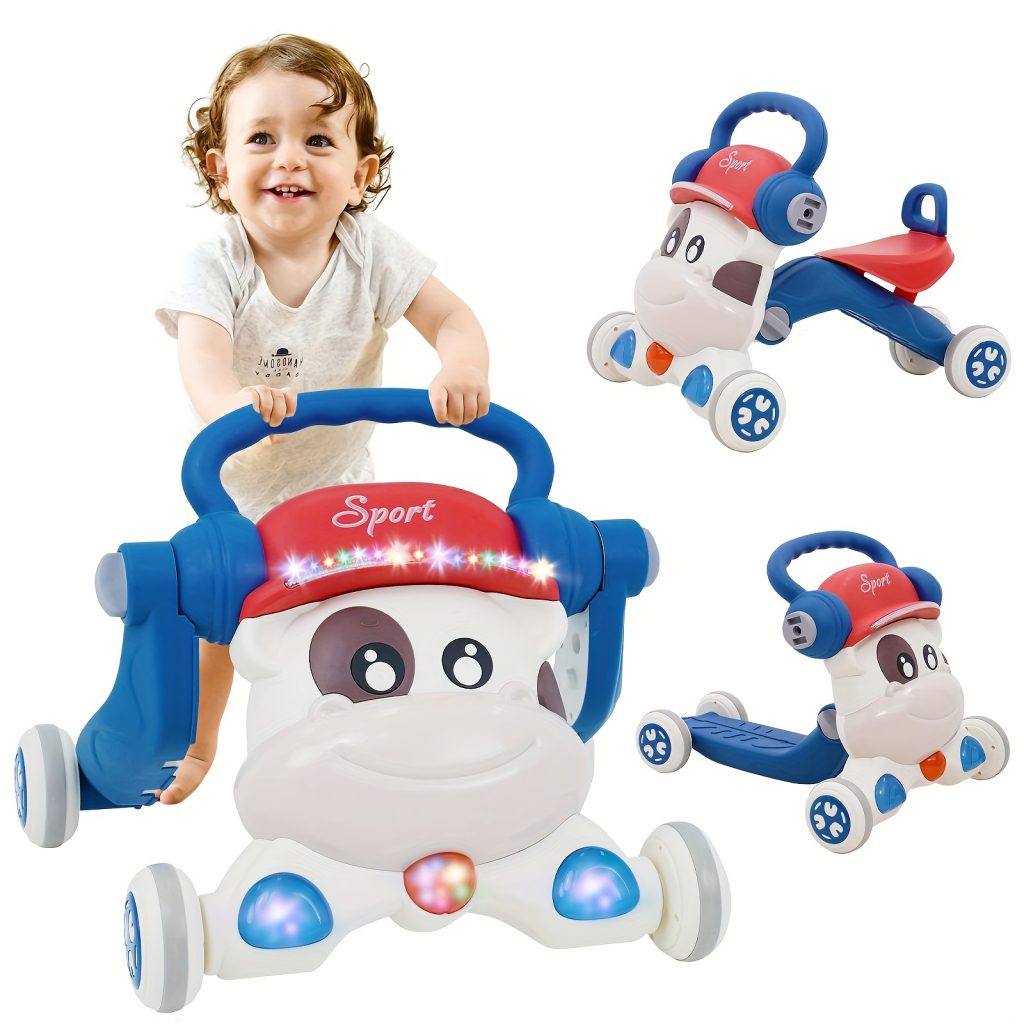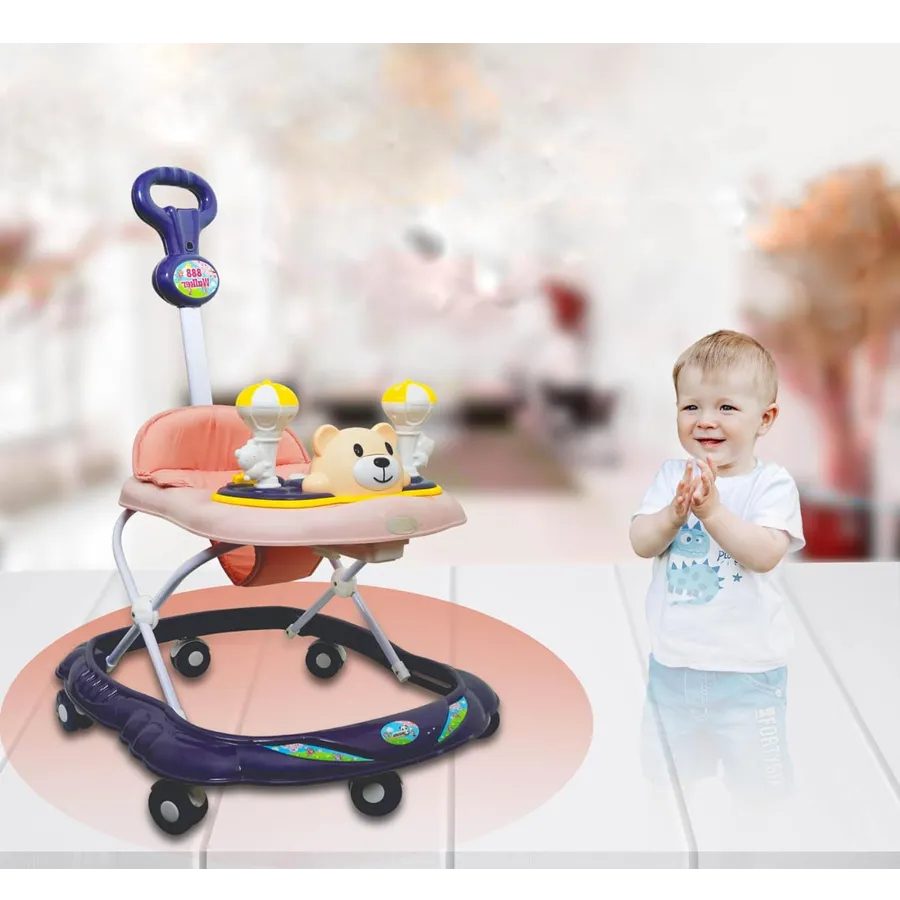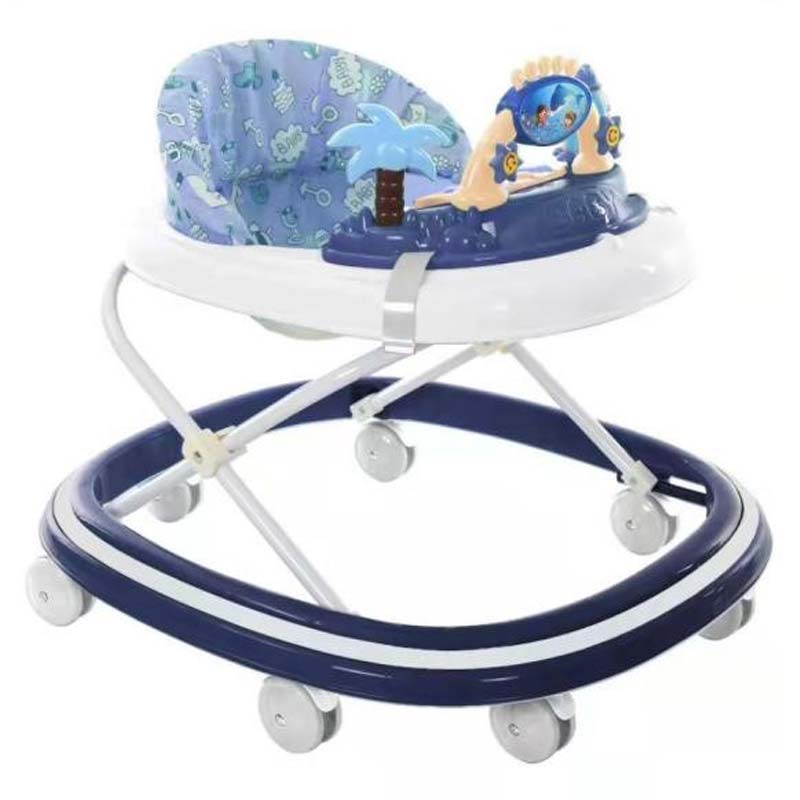A baby walker with wheels can be a delightful and functional addition to help your child explore their surroundings and develop their mobility. However, with numerous options available, it’s essential to choose the right walker that ensures both safety and fun. This comprehensive guide delves into different types of baby walkers with wheels, key features to look for, safety considerations, how to use them effectively, brand recommendations, and maintenance tips.
Different Types of Baby Walkers with Wheels
Traditional Baby Walkers
Traditional baby walkers are typically designed with a sturdy frame and a seating area where the baby can sit and move their legs. These walkers come with a tray in front, often equipped with toys and activities to keep your little one entertained. The wheels located at the bottom allow babies to maneuver around freely and practice their walking skills. Traditional walkers are generally height-adjustable, allowing the walker to grow with your baby. They provide a stable and secure environment for your baby to explore their surroundings while developing their motor skills.
Sit-to-Stand Walkers
Sit-to-stand walkers are versatile and can be used as your baby transitions from sitting to walking. These walkers often feature detachable activity centers that can be used separately for seated play. When the baby is ready to start walking, the walker can be used in a standing position, providing support as they take their first steps. Sit-to-stand walkers usually come with interactive toys, music, and lights to engage your baby. They help in strengthening the baby’s leg muscles and promoting balance and coordination, making them an excellent choice for long-term use.

Key Features to Look For
Safety Features
Safety is a top priority when choosing a baby walker with wheels. Look for walkers with wide bases to prevent tipping and ensure stability. Check for anti-slip pads and friction strips that can help control the speed on smooth surfaces. Ensure that the wheels have locking mechanisms to keep the walker stationary when needed. Additionally, some walkers come with brake pads to prevent falls on stairs. Always choose walkers with sturdy frames made from non-toxic materials. Safety certifications from recognized organizations can also provide added peace of mind.
Adjustable Heights
Babies grow quickly, so an adjustable-height feature is essential in a walker. Ensure that the walker you choose has multiple height settings to accommodate your child’s growth. This feature allows the walker to remain ergonomic, ensuring that your baby’s feet touch the ground flatly without causing strain on their legs. Adjustable height settings also promote better posture and walking habits. Make sure that the height adjustment mechanism is easy to use and secure. This way, you can quickly adjust the walker’s height as your baby grows.
Safety Considerations
Supervision
No matter how safe a baby walker toy is designed to be, constant supervision is crucial. Never leave your baby unattended while they are using the walker. Accidents can happen quickly, and it’s essential to be nearby to intervene if necessary. Supervise your baby closely, especially near stairs, uneven surfaces, or potential hazards. Make sure that all safety features are engaged and that the walker is used in a safe environment. Being attentive and vigilant can prevent most accidents and ensure your baby’s safety while they explore their independence.
Appropriate Usage
Using a baby walker correctly is vital for your child’s safety and development. Follow the manufacturer’s guidelines regarding weight and height limits. Ensure that the walker is used on flat, stable surfaces to prevent tipping or rolling over. Avoid using walkers near stairs, pools, or other hazardous areas. Limit the time your baby spends in the walker to prevent over-exertion and ensure they have ample floor time for crawling and other developmental activities. Proper usage of the walker encourages safe exploration and supports healthy growth and development.

How to Use Baby Walkers Effectively
Encouraging Development
While baby walkers can be fun and beneficial, it’s essential to use them as a tool to encourage development, rather than a primary means of mobility. Encourage your baby to use the walker to practice standing and taking steps but also provide plenty of floor time for crawling, sitting, and playing. Engage with your baby while they’re in the walker by placing toys or objects slightly out of reach to motivate them to move and explore. Balance walker time with other activities that promote motor skills and cognitive development.
Creating a Safe Environment
Set up a safe environment for your baby to use their walker. Clear the area of any sharp objects, cords, or small items that could pose a choking hazard. Use safety gates to block off stairs and ensure that doors leading to unsafe areas are closed. Ensure that the walker is used on smooth, flat surfaces to prevent tipping. Regularly inspect the walker for any signs of wear and tear or loose parts that could compromise safety. Providing a secure environment allows your baby to explore and develop confidently.
Brand Recommendations
Fisher-Price
Fisher-Price has built a strong reputation for offering high-quality baby walkers that prioritize both safety and development. The walkers it designs typically include interactive toys, music, and lights, engaging your baby effectively. Their models, such as the Fisher-Price Walker-to-Wagon, transition from a seated walker to a push walker, providing versatility. Fisher-Price incorporates adjustable height settings and sturdy frames into its walkers, ensuring both durability and safety. This commitment to quality and innovation makes Fisher-Price walkers a reliable choice for parents.
VTech
VTech is another trusted brand renowned for its educational toys and baby gear. Their sit-to-stand learning walkers are popular for their interactive play panels that promote early learning. VTech walkers are designed to support different stages of development, from sitting to standing and walking. These walkers feature adjustable speeds, anti-slip wheels, and a multitude of educational activities. The engaging features and robust construction make VTech walkers a great investment for parents looking to support their baby’s early development with fun and learning.

Maintenance Tips
Regular Cleaning
Regular cleaning is essential to keep your baby’s walker hygienic and in good working condition. Most baby walkers have removable seats that are machine washable. The frame and toys can be wiped down with a mild detergent and warm water. Ensure that all surfaces are thoroughly dried before reassembling the walker. Regularly check the wheels for any debris that might hinder movement and clean them as needed. Keeping the walker clean ensures that your baby has a safe and healthy environment to explore and play.
Regular Inspection
Regularly inspect the baby walker for any signs of wear and tear or damage. Check the seat for any tears, the frame for any loose or broken parts, and the wheels for smooth operation. Ensure that all adjustable features, such as height settings and wheel locks, function correctly. Address any issues immediately to prevent potential safety hazards. Regular maintenance and inspection prolong the life of the walker and ensure it remains safe for your baby to use.
A baby walker with wheels can be a fantastic tool to support your baby’s early mobility and development. By understanding different types, key features, safety considerations, and how to use them effectively, you can make an informed choice. Brands like Fisher-Price and VTech offer high-quality options that cater to various developmental needs. Regular maintenance and safety checks ensure the walker remains a secure and enjoyable accessory for your baby. Whether you choose a traditional walker or a sit-to-stand model, the right baby walker can provide both fun and developmental benefits for your little one.
